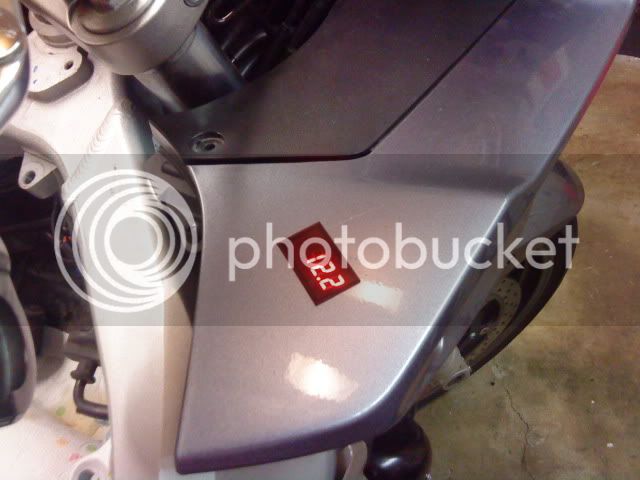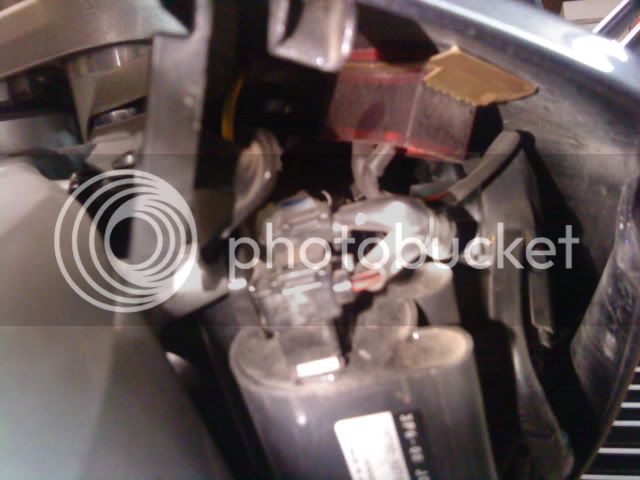LDRydr
A Homeless Nomad
The red one is faster, good for at least a 5hp increase. :lol:So, what's wrong with the blue? I'm assuming sun/glare/maybe it's too bright at night?

The red one is faster, good for at least a 5hp increase. :lol:So, what's wrong with the blue? I'm assuming sun/glare/maybe it's too bright at night?
Below link is the *exact* Datel you want.... essential equipment for Iron Butt Riders on bikes like our FJR:So specifically, which Datel is the bees knees? Which one is 'the' one to have?
[insert Link here]
Datel DMS-20PC-1-DCM voltmeter
Do not get the blue version. Believe me. Trust me.
Do not get the 1/100th placement version. The last digit will be constantly changing, and will prove irritating and distracting in short order
The red XX.X version (DMS-20PC-1-DCM) is The One.



Interesting comment, Dale. Abt a year ago, I asked this very question. The responses were to definitely add an in-line fuse. If I didn't, I was playing w/ fire...literally. Since I'm not very good w/ electrical anything, I got an in-line fuse.Wire the Datel positive (+) lead directly to the battery's positive post. You may insert a 1-amp fuse inline if you truly feel the need, but a "pure", unhindered, unencumbered connection using quality twisted-strand wiring would be optimal, ensuring it is insulated and even further encased in shrink-tube to prevent any chaffing issues.
Wire the Datel negative (-) lead to a *high-quality* toggle switch of your choosing, which is then connected directly to the battery's negative terminal. Place nothing else in between.
As I say, feel free to accept or reject the above as you see fit.
Concur. Fortunately, that's not my bike.....[edit] Oh, and Dale... 10.9V? That ain't so good.
The latter being the case, it's always good to err on the side of safety. Too, back in The Day, I used a small inline fuse when I ran the Datel on my ST1100 many years ago.Interesting comment, Dale. Abt a year ago, I asked this very question. The responses were to definitely add an in-line fuse. If I didn't, I was playing w/ fire...literally. Since I'm not very good w/ electrical anything, I got an in-line fuse.
Well, being one of those guys that works with the electrons every day, I'd say that you heard (and done) eggs-ackly right.Interesting comment, Dale. Abt a year ago, I asked this very question. The responses were to definitely add an in-line fuse. If I didn't, I was playing w/ fire...literally. Since I'm not very good w/ electrical anything, I got an in-line fuse.
The Datel's current draw will be in addition to the normal quiescent current of the ECU. Ambient temps will affect how well the battery will take the trickle discharge; you may want to note temperature too....I think that this winter I will run an experiment and rewire my Datel meters directly to the batteries...I'll first collect some current drain info in the present configurations, also charge the batteries up and record battery voltage drop over a couple of weeks (using a multimeter, not the Datel), then I'll rewire them right off the battery...so they are always on and then repeat the measurements.
Personally, I'd much rather have a panel meter always on, telling me the battery voltage at a glance at all times. Assuming the battery drain is insignificant (as I suspect).










Roger that.The Datel's current draw will be in addition to the normal quiescent current of the ECU. Ambient temps will affect how well the battery will take the trickle discharge; you may want to note temperature too....I think that this winter I will run an experiment and rewire my Datel meters directly to the batteries...I'll first collect some current drain info in the present configurations, also charge the batteries up and record battery voltage drop over a couple of weeks (using a multimeter, not the Datel), then I'll rewire them right off the battery...so they are always on and then repeat the measurements.
Personally, I'd much rather have a panel meter always on, telling me the battery voltage at a glance at all times. Assuming the battery drain is insignificant (as I suspect).
I've designed Datel meters into Ion Implanters since 1980 and designed process controllers to compete with Datel at MKS Instruments. The Datel meters perform as advertised; expect the meters to meet their data sheet specs.
That's exactly what I did (and no fuse either - just quality wire).Do not do this "constant" connection to the battery. Trust me.
Wire the Datel positive (+) lead directly to the battery's positive post. You may insert a 1-amp fuse inline if you truly feel the need, but a "pure", unhindered, unencumbered connection using quality twisted-strand wiring would be optimal, ensuring it is insulated and even further encased in shrink-tube to prevent any chaffing issues.
Wire the Datel negative (-) lead to a *high-quality* toggle switch of your choosing, which is then connected directly to the battery's negative terminal. Place nothing else in between.

Unless you have pics you didn't really do this.I found an unobtrusive mounting point for Mr. Datel that I havn't seen mentioned- I simply stuck it to the steering head with heavy duty mounting tape[same kind used to mount wheel weights], directly above the fork stop boss-where it easily clears the fork tube at full lock-wired it directly to the battery with a fuse and passed the wires thru the chase in the steering head was that a run on sentence ?
I found a red one with spalkin's lead here: https://tinyurl.com/55wg5oThat's exactly what I did (and no fuse either - just quality wire).Do not do this "constant" connection to the battery. Trust me.
Wire the Datel positive (+) lead directly to the battery's positive post. You may insert a 1-amp fuse inline if you truly feel the need, but a "pure", unhindered, unencumbered connection using quality twisted-strand wiring would be optimal, ensuring it is insulated and even further encased in shrink-tube to prevent any chaffing issues.
Wire the Datel negative (-) lead to a *high-quality* toggle switch of your choosing, which is then connected directly to the battery's negative terminal. Place nothing else in between.


I suck at pictures-don't even have a digital yet.. anyhowUnless you have pics you didn't really do this.I found an unobtrusive mounting point for Mr. Datel that I havn't seen mentioned- I simply stuck it to the steering head with heavy duty mounting tape[same kind used to mount wheel weights], directly above the fork stop boss-where it easily clears the fork tube at full lock-wired it directly to the battery with a fuse and passed the wires thru the chase in the steering head was that a run on sentence ?
I don't see anything indicating that meter is weatherproof.
My only comment is that you oughts consider moving to So Cal, Florida... wherever there is year-round riding... :lol:OK, so then the experiment is probably worth doing. Time to design the experiment.
<<< Massive Hypothesis Snippage... >>>
Comments?
I noticed that all the Datel installs shown here are on Gen I. Is there enough room in Gen II under the right panel that covers the battery? If not, any suggestions? Sam


Enter your email address to join: